34+ AMA Citation Examples to Download
Citing sources accurately is an indispensable aspect of academic writing that ensures the credibility and reliability of your work. The American Medical Association (AMA) Citation Format is one of the widely used styles in the medical and scientific fields. With its emphasis on concise and well-organized referencing, the AMA format streamlines the citation process, facilitating a seamless flow of information from in-text citations to the comprehensive bibliography. In this article, we explore 34+ AMA Citation Format examples, along with a step-by-step guide on how to use this citation style effectively.
1. Citing in AMA Format Example
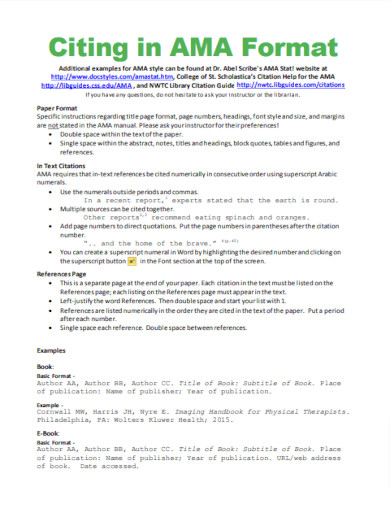
nwtc.edu
2. Guide to AMA Manual of Style
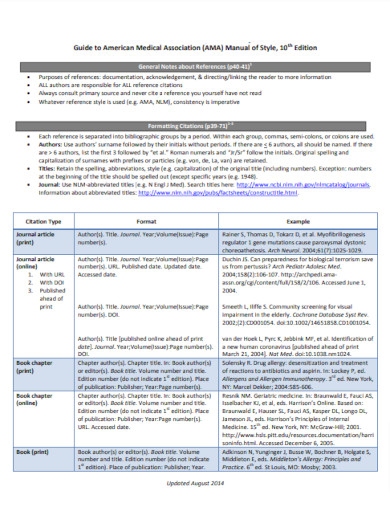
lynchburg.edu
3. AMA Format Handout Example
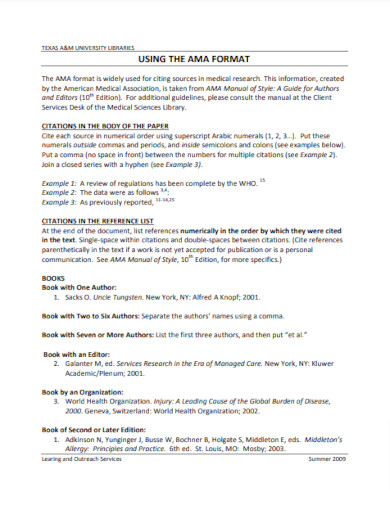
library.tamu.edu
4. AMA Citation Style Guide Example

bcit.ca
5. AMA Citation Style A Concise Guide
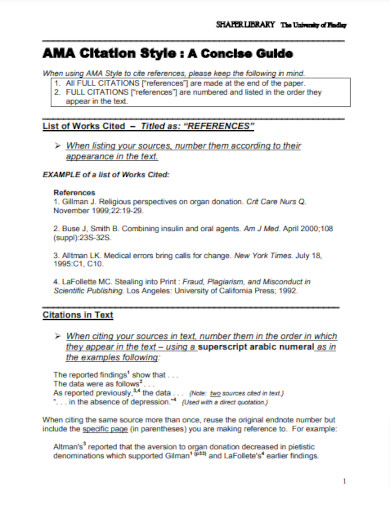
lwtech.edu
6. Simple AMA Style Guide Example
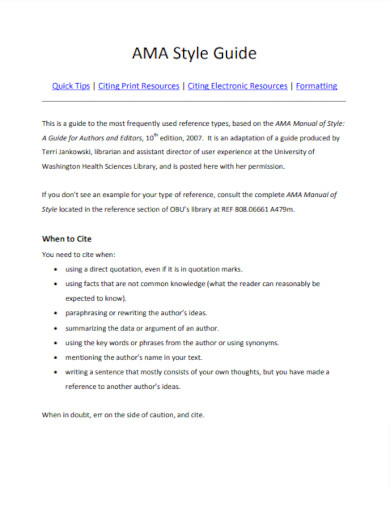
obu.edu
7. AMA Citation and Formatting Guide
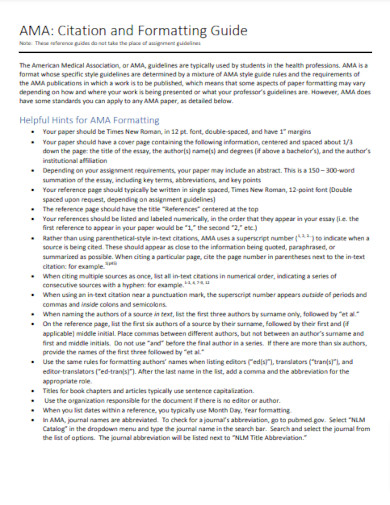
fgcu.edu
8. AMA Manual of Style Citation Guide
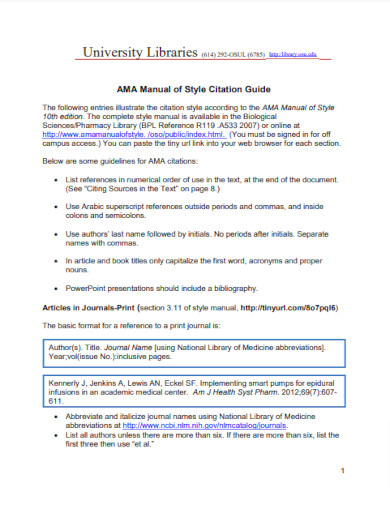
library.osu.edu
9. Sample AMA Citation Guide
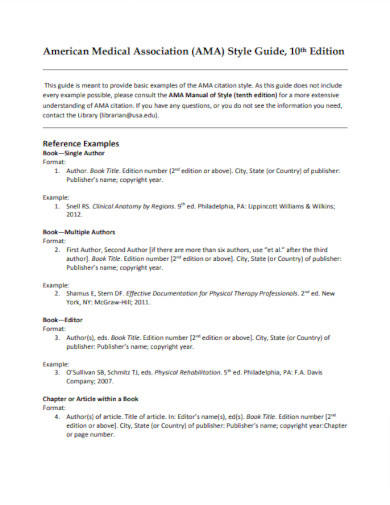
bpb-us-e2.wpmucdn.com
10. AMA Reference Style Example
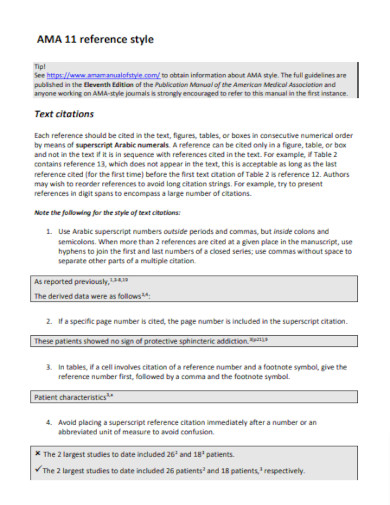
journals.sagepub.com
11. How to Cite AMA Style Example
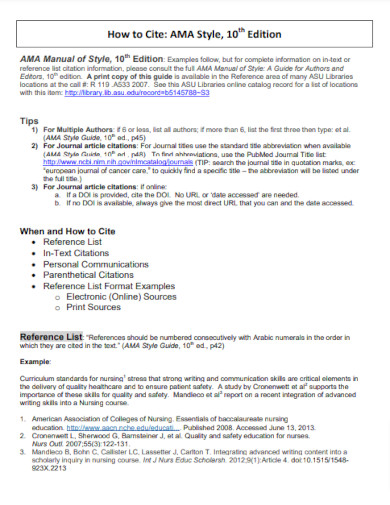
conhi.asu.edu
12. Brief AMA Citation Guide Example
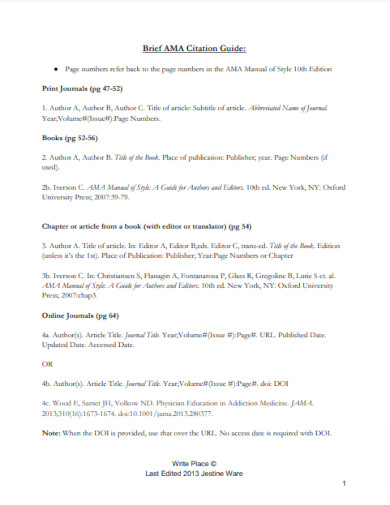
stcloudstate.edu
13. AMA Style Guidelines Example
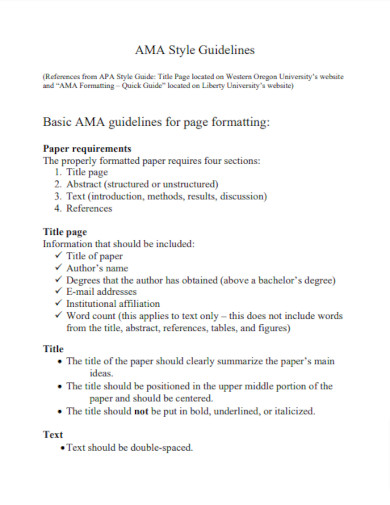
uncp.edu
14. AMA Style Citation Contents Example
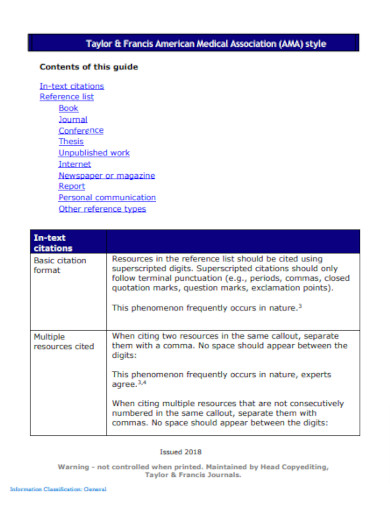
files.taylorandfrancis.com
15. Basic AMA Citation Style Example
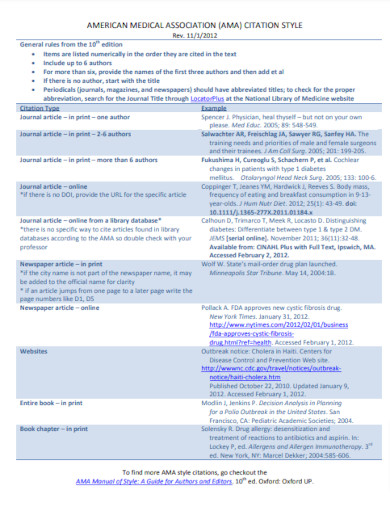
onlinelibrary.wiley.com
16. Citation Style for Academic Writing
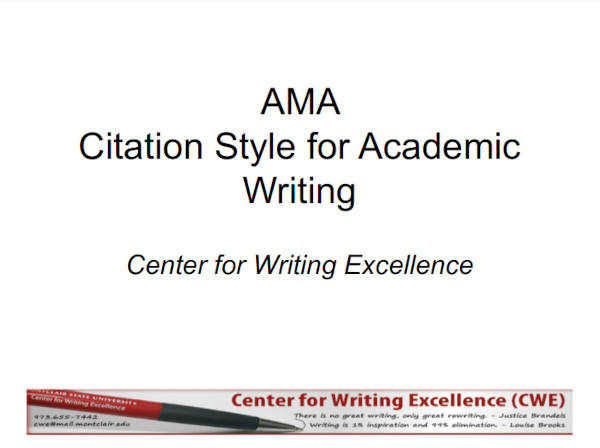
montclair.edu
17. AMA Style Citations and References
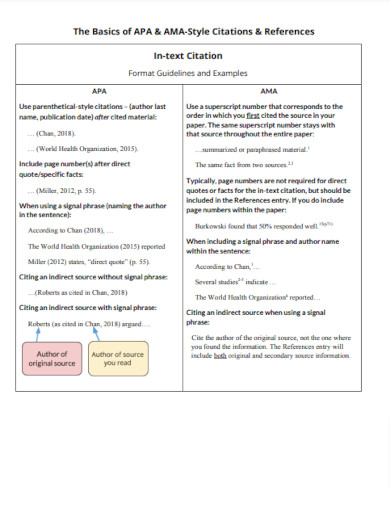
success.une.edu
18. AMA Citation Style Quick Guide

apsu.edu
19. Draft AMA Citation Style Guide
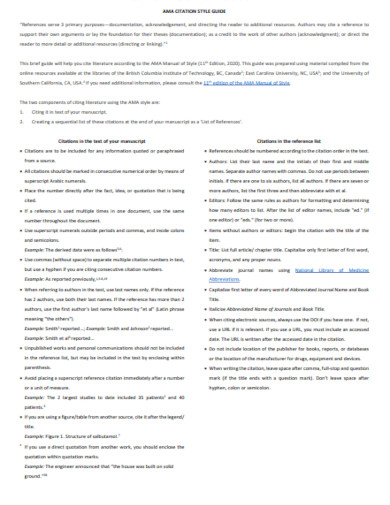
worldscientific.com
20. American Medical Association Citation Guidelines
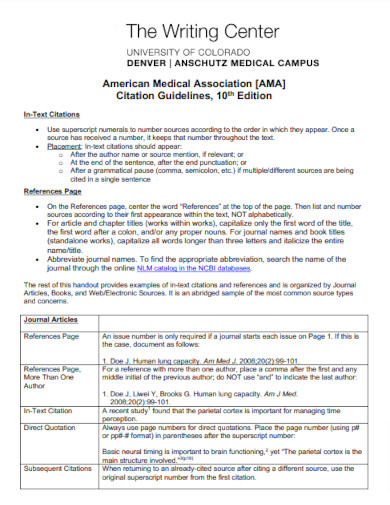
clas.ucdenver.edu
21. Popular AMA Reference Style Example
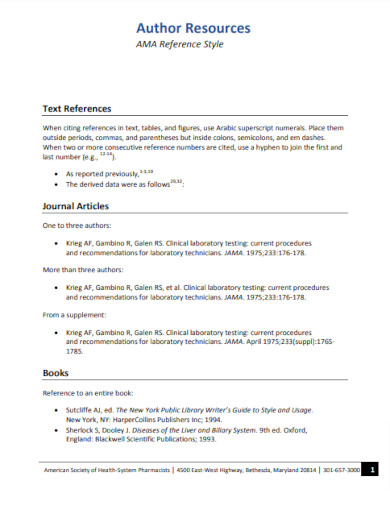
ashp.org
22. Quick Reference Citation Format
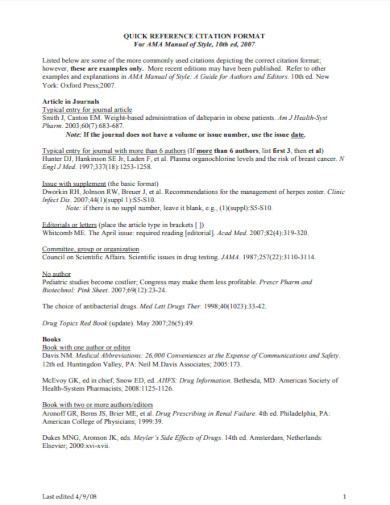
auntminnie.com
23. Editable AMA Citation Guide Example
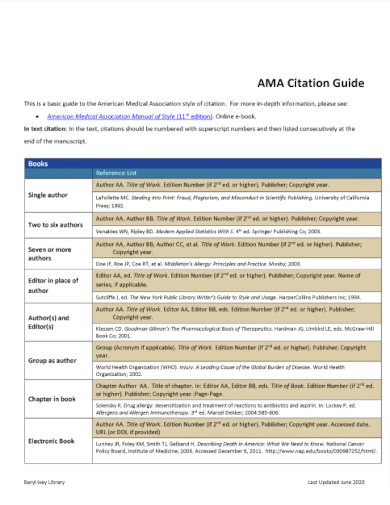
brescia.uwo.ca
24. Printable AMA Citation Guide Example
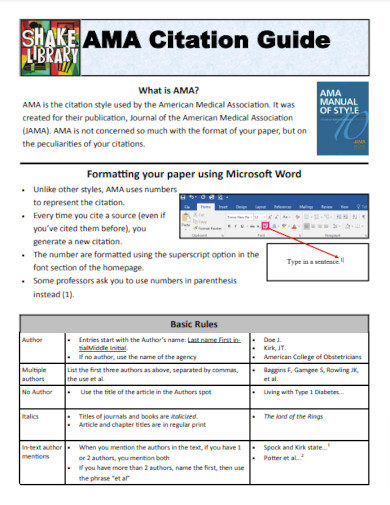
vinu.edu
25. AMA Citations A Quick Reference
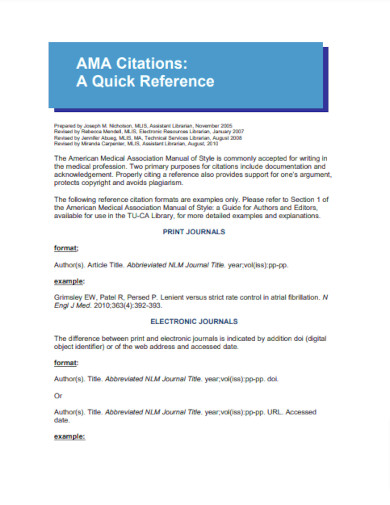
hphr.org
26. AMA Documentation Style Quick Reference
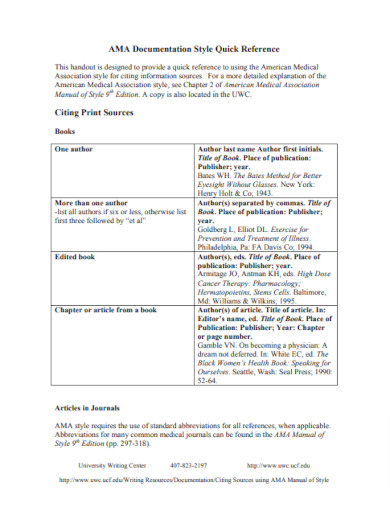
uwc.cah.ucf.edu
27. Standard AMA Citation Style Example
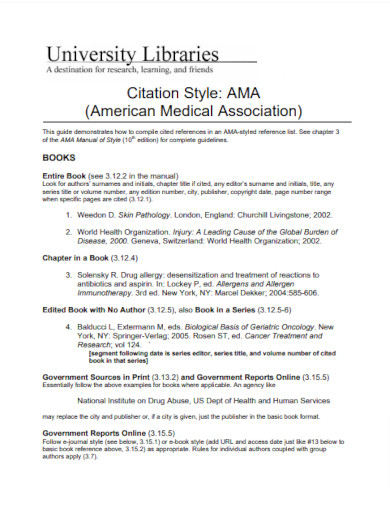
hartness.vsc.edu
28. American Medical Association Style Guide
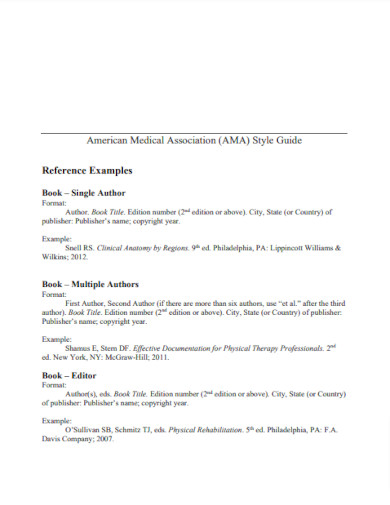
utc.edu
29. Modern AMA Citation Style Example
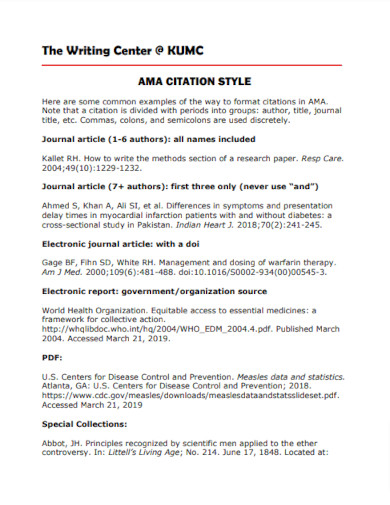
kumc.edu
30. Basic AMA Citation Format Example
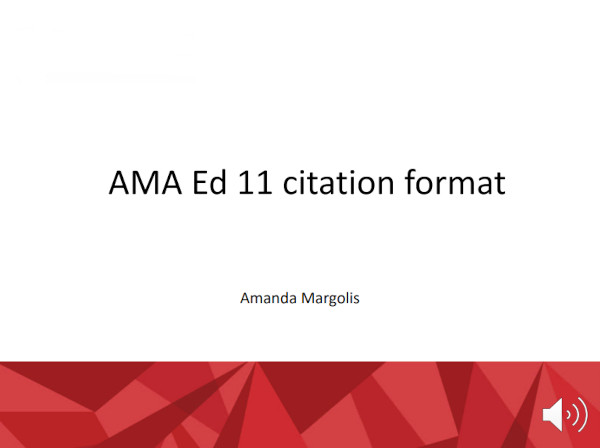
pswi.org
31. AMA Citation Style Quick Guide Example
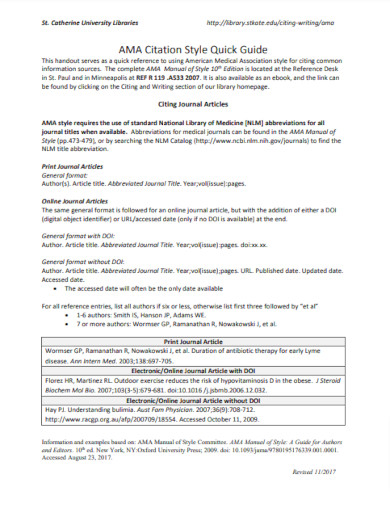
dl.icdst.org
32. Creative AMA Citation Style Example
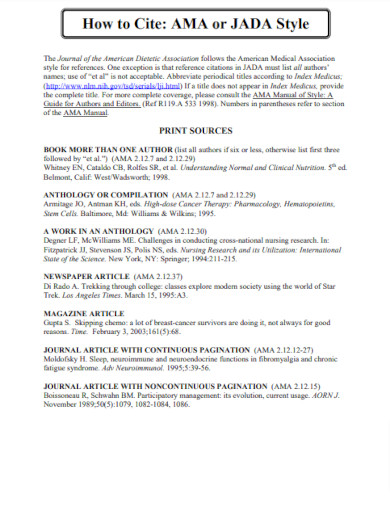
eatwellmd.org
33. Online AMA Citation Style Example
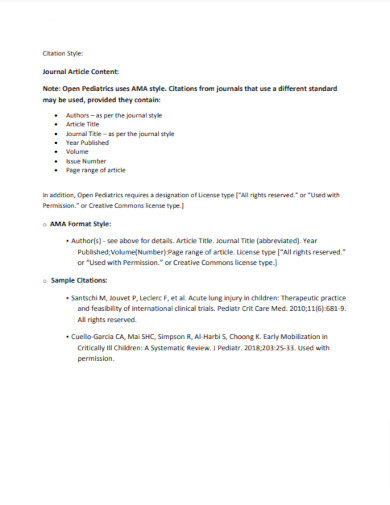
dme.childrenshospital.org
34. Sample Citation Style Guide Example
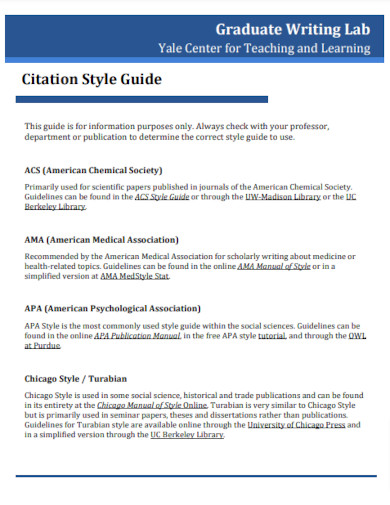
poorvucenter.yale.edu
35. Simple AMA Citation Guide Example
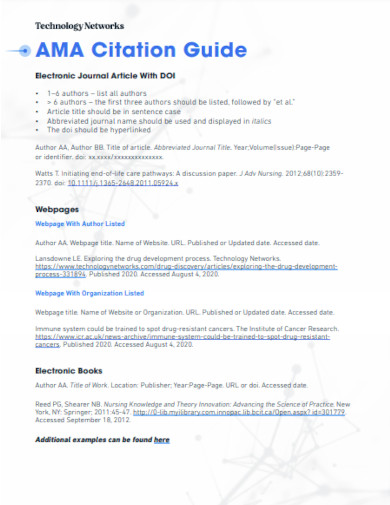
cdn.technologynetworks.com
What is AMA Citation Format?
The American Medical Association (AMA) Citation Format is a set of guidelines developed by the American Medical Association to establish uniformity in citing sources within the medical and scientific communities. It provides a structured approach to referencing, ensuring proper attribution of information while enhancing the clarity and readability of scholarly papers. AMA utilizes a numerical system for in-text citations, allowing readers to cross-reference sources efficiently in the bibliography, also known as the reference list.
How to write in AMA Citation Format
Incorporating the AMA Citation Format into your writing follows a systematic approach. Here are four essential steps to help you effectively utilize this citation style:
Step 1: Identify and Gather Sources:
Begin by identifying the sources you wish to cite in your paper, such as journal articles, books, websites, or other relevant references. Ensure that you have accurate and complete bibliographic information for each source, including author names, article titles, publication dates, and page numbers.
Step 2: Insert In-Text Citations:
In the main body of your text, use a numerical system for in-text citations. Place Arabic superscript numbers after the information you have borrowed from a source, whether it’s a direct quote or a paraphrase. These numbers should correspond to the full citation in the reference list.
Step 3: Compile the Reference List:
At the end of your document, create a comprehensive reference list, also known as a bibliography. Arrange the sources in numerical order based on their corresponding in-text citations. Include all the necessary details for each source, such as author names, article titles, publication dates, and relevant page numbers.
Step 4: Review and Verify Citations:
Before finalizing your work, carefully review all your citations to ensure accuracy and consistency. Double-check that each in-text citation corresponds to the correct full citation in the reference list. Verify the formatting, punctuation, and other elements to adhere to the specific guidelines of the AMA Citation Format.
FAQs
What is the difference between in-text citations and a bibliography?
In-text citations are brief references placed within the main text of your paper, providing the reader with the source’s number or author’s name and the page number, if applicable. On the other hand, a bibliography (also called the reference list) appears at the end of the document and contains the full details of all the sources you cited in your work.
Is the AMA Citation Format only used in medical writing?
While the AMA Citation Format is predominantly used in medical and scientific writing, it is also employed in various other fields, such as biology, health sciences, and related disciplines.
How does AMA Citation differ from other citation styles like APA and MLA?
AMA, APA, and MLA are distinct citation styles, each tailored for specific academic disciplines. AMA is primarily used in medicine and related fields, utilizing numerical in-text citations. APA (American Psychological Association) is common in the social sciences, featuring author-date in-text citations. MLA (Modern Language Association) is prevalent in the humanities, using author-page in-text citations.
In conclusion, Mastering the AMA Citation Format is a valuable skill for researchers and scholars seeking to communicate their ideas effectively while acknowledging the contributions of others. This structured approach to citation enhances the credibility of your work, allowing readers to delve into the referenced sources and validate your claims. Embracing the AMA Citation Format not only ensures adherence to academic standards but also strengthens the overall text structure, elevating the impact and significance of your writing. So, next time you embark on an academic endeavor, remember to integrate the AMA Citation Format for a seamless and well-cited masterpiece.

